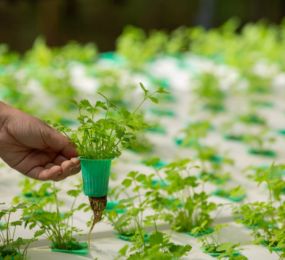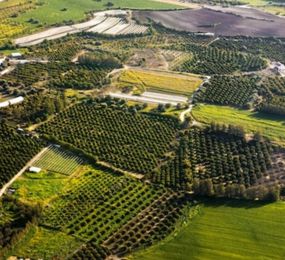By utilizing shared land for dual purposes, agrivoltaics optimizes resources and minimizes land-use conflicts. Recent structural advancements are making it easier and more efficient to implement agrivoltaic systems, accelerating their adoption worldwide.
The adoption of agrivoltaics still faces challenges, including cost barriers, integration complexities, and the need for tailored solutions for different agricultural landscapes. Innovations in technology and structural designs are addressing these challenges, opening up new opportunities for scalability and efficiency.
Structural Solutions Tailored to Agriculture
Structural design plays a crucial role in the successful implementation of agrivoltaics. Recent solutions focus on adapting solar installations to meet the needs of specific crops and farming practices.
- Elevated Solar Installations:
Raised solar panels allow for traditional farming equipment to operate beneath them, maintaining the efficiency of existing agricultural practices. These structures also provide shade for crops, reducing water evaporation and improving yield in arid regions.
- Movable Solar Systems:
Movable or retractable solar panel systems provide flexibility, enabling farmers to adjust shading levels based on seasonal or daily crop needs. This innovation enhances crop adaptability and improves resource management.
- Modular Agrivoltaic Designs:
Modular systems allow for easy scalability, enabling farmers to expand solar installations gradually. These designs are particularly beneficial for small and medium-sized farms, providing an affordable entry point into agrivoltaics.
Case Studies of Successful Agrivoltaic Adoption
- France: Vineyard Agrivoltaics
French vineyards are leading the way in agrivoltaics by using elevated solar panels to protect grapevines from excessive heat while generating clean energy. This innovative approach has improved grape quality and reduced irrigation needs.
Accelerating Agrivoltaics Adoption
To accelerate the global adoption of agrivoltaics, several measures need to be prioritized:
- Policy and Incentives: Governments must create favorable policies, including tax benefits and subsidies, to encourage farmers and energy providers to adopt agrivoltaic systems.
- Public-Private Partnerships: Collaboration between private industries and government agencies can provide the funding and infrastructure needed for large-scale projects.
Agrivoltaics represents a paradigm shift in how we approach agriculture and energy production. By merging these two essential sectors, agrivoltaics offers a pathway to a more sustainable, resilient, and climate-smart future.
Don’t miss this opportunity to lead the way in agrivoltaics innovation.
Register today and join us in advancing the future of renewable energy and agriculture: https://bit.ly/3DU2FI2.
For more information and group participation, contact us: [email protected]
















